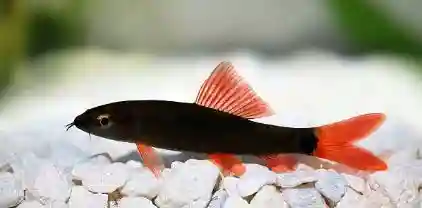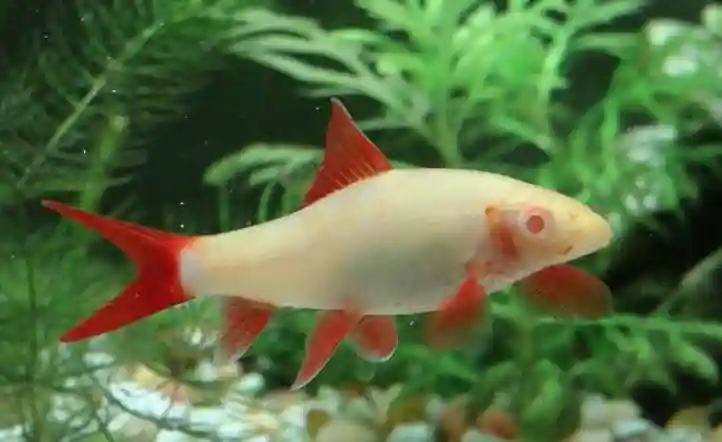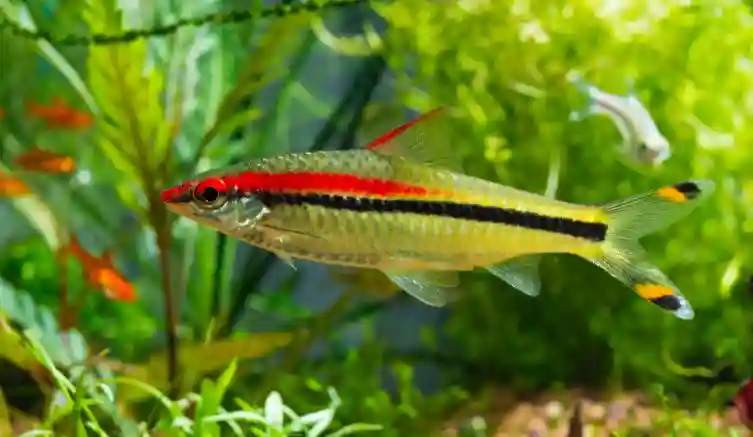Freshwater sharks are a fascinating group of creatures that have adapted to live in freshwater environments. Despite their name, they are not the typical sharks we often think of. These unique species have developed the ability to retain salt and recycle it within their bodies, allowing them to thrive in freshwater habitats.
Types of Freshwater Sharks
There are several types of freshwater sharks, each with its own unique characteristics and adaptations1 2.
River Sharks: River sharks, also known as Glyphis, are true freshwater sharks found in fresh and brackish water in Asia and Australia. They are one of the few shark species that have adapted to live exclusively in rivers.
Bull Sharks: Bull sharks, scientifically known as Carcharhinus leucas, can swim between salt and fresh water. They are found in tropical rivers around the world. Despite their reputation for being aggressive, bull sharks play a crucial role in maintaining the health of river ecosystems.
Speartooth Sharks: The Speartooth Shark (Glyphis Glyphis) is able to transition between both saltwater and freshwater. This incredibly rare type of freshwater shark is native to West Papua, Papua New Guinea, and Northern Australia.
Ganges Sharks: The Ganges Shark (Glyphis Gangeticus) is a critically endangered marine species typically found in the Ganga, Hooghly, Mahanadi, and Brahmaputra rivers in India.
Types of freshwater sharks that are commonly kept in aquariums
- Bala Shark: Also known as the Silver Shark, this species is known for its silver body and high dorsal fin1. They are peaceful and prefer to live in groups.
- Iridescent Shark: Despite their name, these are actually a type of catfish. They are known for their iridescent blue sheen.
- Mekong Giant Catfish: Another species of catfish, these fish are one of the largest freshwater fish in the world.
- Giant Pangasius: Also known as Paroon Sharks, these fish are large and have a distinct, shark-like appearance.
- Red Tail Shark: These fish have a vibrant red tail that contrasts with their dark body. They can be territorial and may not get along with other bottom-dwelling fish.
- Columbian Shark: Also known as the Silver Tipped Shark, this species is actually a type of catfish. They are known for their silver tips and ability to adapt to various water conditions.
- Roseline Shark: These vibrant fish are known for their red line that runs along their body.
- Rainbow Shark: Known for their vibrant red fins and dark bodies, Rainbow Sharks can add a splash of color to your tank.

Characteristics
Freshwater sharks are short, with small eyes and broad snouts. According to documented data, river sharks can reach about 9 feet in length as well and are usually larger than ocean sharks3.
Food Habit
Freshwater sharks are omnivores. They enjoy a broad diet and many different foods. You can feed them high-quality fish flakes, live black worms, brine shrimp, mosquito larvae, chopped fruit, shelled peas, blanched spinach, and a variety of smaller seafood4. Sharks that are capable of surviving in freshwater eat almost anything: fish, crustaceans, molluscs, marine mammals, and other sharks5.
Freshwater Sharks Diet chart
| Day | Morning Meal | Evening Meal |
|---|---|---|
| Monday | High-quality fish flakes | Live black worms |
| Tuesday | Brine shrimp | Mosquito larvae |
| Wednesday | Chopped fruit | Shelled peas |
| Thursday | Blanched spinach | Variety of smaller seafood |
| Friday | High-quality fish flakes | Live black worms |
| Saturday | Brine shrimp | Mosquito larvae |
| Sunday | Chopped fruit | Shelled peas |
Care
Freshwater sharks tolerate a wide range of water quality parameters in the aquarium. For best results, pH should be between 6.8 and 8.0, with hardness between 2° and 10° dKH (35 to 175 ppm). Colombian or hi-fin sharks prefer slightly higher pH and alkalinity and benefit from the addition of up to 1 tablespoon of aquarium or sea salt per gallon. Maintain good filtration and do a 10% water exchange every week or 25% every 2 weeks using an Aqueon Aquarium Water Changer or Siphon Vacuum Gravel Cleaner.

Breeding
Breeding different types of freshwater sharks isn’t possible. Very few records of freshwater shark breeding in home aquariums have been reported. Commercial breeders often use hormones to induce the spawning of redtail, rainbow, and bala sharks.
Tank Size Requirements
The recommended tank size for them is 50 to 60 gallons, and in special cases, the tank must be 90 gallons or even more. If you want to keep them in a community then you should use at least a 100-gallon tank.
Best recommended Plants for freshwater sharks in an Aquarium
Several plants are recommended for freshwater shark aquariums. Here are a few:
- Amazon Sword: This is a large plant with lance-shaped leaves and a moderate growth rate.
- Anubias: Anubias is one of the best beginner aquarium plants. It can be anchored to a rock or driftwood.
- Saururus Cernuus (Lizard’s tail): This plant is known for its unique tail-like appearance.
- Lobelia Cardinalis (Cardinal Plant): This plant is known for its bright red flowers.
- Elatine Macropoda: This is a low-growing plant that’s perfect for the foreground of your tank.
- Echinodorus Tenellus: A grass-like plant that’s perfect for creating a natural-looking environment.
- Heteranthera Zosterifolia: A beautiful stem plant with bright green leaves.
- Bolbitis Heudelotii (African Water Fern): A unique fern that can be attached to rocks or driftwood.
It’s important to consider the specific needs of your freshwater sharks when choosing plants for your aquarium.
What is the lifespan of freshwater sharks?
The lifespan of freshwater sharks can vary depending on the species. Some freshwater sharks can live up to 20 years or more. For instance, the Red Tail Shark and Harlequin Shark have a lifespan of 5–8 years. However, these lifespans can be influenced by factors such as diet, environment, and care.
What is the smallest freshwater shark?
The smallest freshwater shark is the Borneo River Shark, which can reach a maximum length of 2 feet. However, it’s worth noting that this species is incredibly rare and is found in the Kinabatangan River in Sabah, Malaysian Borneo. It belongs to the Carcharhinidae or Requiem family, typically inhabiting warm tropical waters.
How do I set up a tank for freshwater sharks?
Setting up a tank for freshwater sharks involves several steps:
- Choose the right tank size: Freshwater sharks need ample room to swim, so ideally, you should get a 55-gallon tank or at the very least a 30+ gallon tank. For some species like Bala Sharks, a 150-gallon tank is recommended.
- Add substrate and decor: Add substrate, live plants, and other tank decors. Freshwater sharks are bottom dwellers and prefer a densely planted tank with some open areas for swimming, with plenty of rocks or logs to hide among.
- Install necessary equipment: Install the filter, heater, pump, and airstone. Ensure that the heater, pump, and filter are all working properly.
- Prepare the water: Fill the tank with dechlorinated water. The pH should be between 6.8 and 8.0, with hardness between 2° and 10° dKH (35 to 175 ppm). Some species like Colombian or hi-fin sharks prefer slightly higher pH and alkalinity and benefit from the addition of up to 1 tablespoon of aquarium or sea salt per gallon.
- Let the tank cycle: Let the tank cycle for a few weeks before introducing your freshwater sharks. This allows beneficial bacteria to establish in the tank which helps maintain water quality.
- Introduce your sharks: Once your tank is fully cycled and all equipment is working properly, you can introduce your freshwater sharks.
Each species of freshwater shark may have specific care requirements, so it’s important to research the needs of the specific species you plan to keep.
Can you keep multiple types of freshwater sharks together in one tank?
Keeping multiple types of freshwater sharks together in one tank can be challenging due to their different temperaments and needs. For instance, Redtail and Rainbow Sharks are generally said to be incompatible with other sharks due to their semi-aggressive nature. Redtail sharks are known for their aggressive and competitive nature, and it’s usually not a good idea to keep them in the same tank with other smaller fishes, especially other redtails or rainbow sharks. However, Apollo and Bala Sharks do best when kept in schools with three or more companions of their own species. Always research the specific needs and behaviors of each species before attempting to house them together. It’s crucial to provide enough space and the right environment for each species to thrive.
Compatible fishes for freshwater sharks

Freshwater sharks can be kept with a variety of other fish species, but it’s important to consider the temperament and size of the other fish. Here are some compatible fishes for freshwater sharks:
- Bala Sharks: Despite their somewhat intimidating looks, Bala Sharks are considered to be gentle giants. They are relatively peaceful and get along well with a wide range of fish.
- Tetras or Barbs: They do best with fish species that school in the upper water columns of the tank, such as tetras or barbs.
- Mollies: Mollies are a peaceful and popular community fish.
- Apollo and Bala Sharks: The Apollo and Bala Sharks do best when kept in schools with three or more companions of their own species.
Remember, it’s always best to research the specific needs and behaviors of each species before attempting to house them together. It’s crucial to provide enough space and the right environment for each species to thrive.
Some interesting fun facts about Freshwater sharks
Let’s explore some fun facts about freshwater sharks:
- No Bones About It: Sharks, including freshwater sharks, do not have bones. They are a special type of fish known as “elasmobranchs”, which translates into fish made of cartilaginous tissues— the clear gristly stuff that your ears and nose tip are made of.
- Sharp Vision: Most sharks can see well in dark-lighted areas, have fantastic night vision, and can see colors.
- Electroreceptor Organs: Sharks have small black spots near the nose, eyes, and mouth. These spots are the ampullae of Lorenzini – special electroreceptor organs that allow the shark to sense electromagnetic fields and temperature shifts in the ocean.
- Skin Like Sandpaper: Shark skin feels exactly like sandpaper because it is made up of tiny teeth-like structures called placoid scales, also known as dermal denticles.
- Trance State: When you flip a shark upside down they go into a trance-like state called tonic immobility.
- Ancient Creatures: Based on fossil scales found in Australia and the United States, scientists hypothesize sharks first appeared in the ocean around 455 million years ago.
Isn’t nature fascinating?
Tips to new owners of freshwater sharks
valuable tips for new owners of freshwater sharks:
- Choose the Right Tank Size: Freshwater sharks need ample room to swim, so ideally, you should get a 55-gallon tank or at the very least a 30+ gallon tank. For some species like Bala Sharks, a 150-gallon tank is recommended.
- Maintain Good Water Quality: Freshwater sharks tolerate a wide range of water quality parameters in the aquarium. For best results, pH should be between 6.8 and 8.0, with hardness between 2° and 10° dKH (35 to 175 ppm). Maintain good filtration and do a 10% water exchange every week or 25% every two weeks.
- Avoid Overcrowding: Overcrowded conditions are a major cause of stress and disease in community tanks. Ensure each shark has enough space to swim and hide.
- Provide Proper Diet: These sharks are omnivores. However, they prefer protein-based snacks like bloodworms, brine shrimp, and more. They have big appetites and should be fed three times a day to support their growth.
- Understand Their Behavior: Fish are individuals with personalities, and they may or may not exhibit the aggression that is expected of their species. Understanding their behavior can help in maintaining a peaceful community tank.
- Provide Hiding Spots: Red tail and rainbow sharks become territorial as they grow and should be provided with plenty of space as well as caves and other structures to call “home”.
- Remember, each species of freshwater shark may have specific care requirements, so it’s important to research the needs of the specific species you plan to keep.
Conclusion
Freshwater sharks are a testament to the adaptability and diversity of life on Earth. Despite facing numerous challenges, these remarkable creatures have found a way to thrive in environments vastly different from those of their saltwater cousins. As we continue to learn more about them, we gain a greater appreciation for the complexity and beauty of our natural world.






